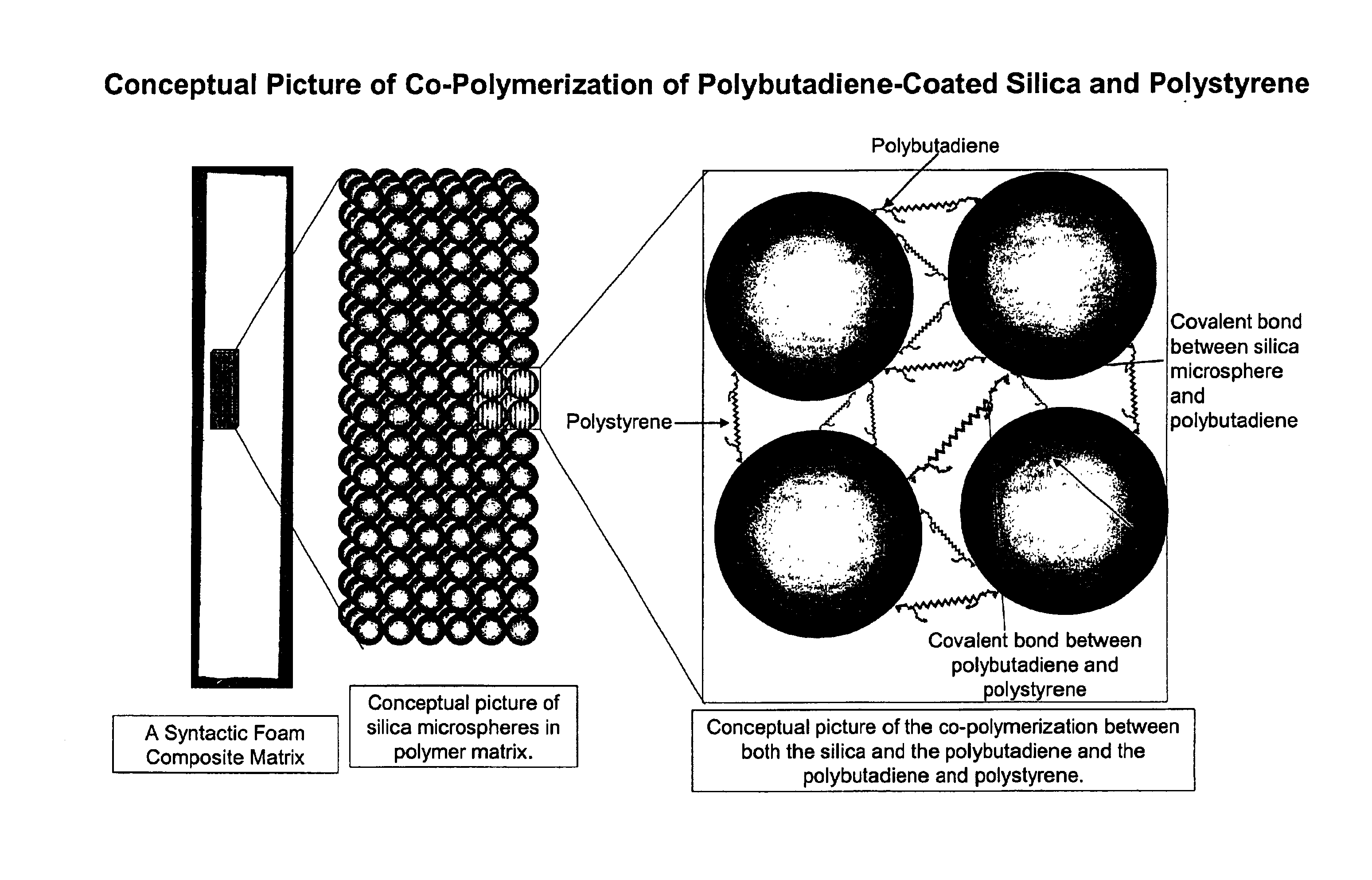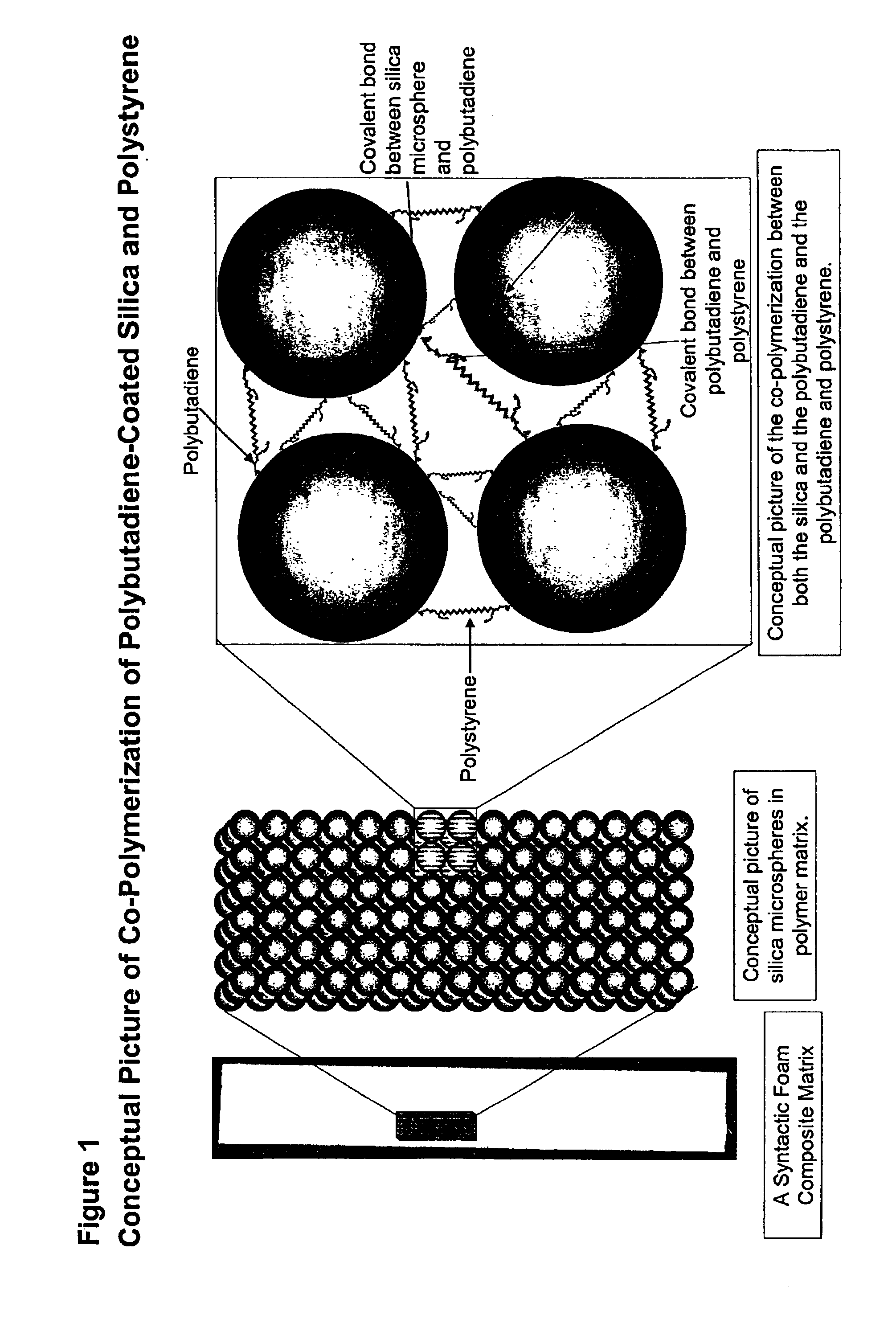Composites incorporating covalently bonded interstitial polymer resins
- Summary
- Abstract
- Description
- Claims
- Application Information
AI Technical Summary
Benefits of technology
Problems solved by technology
Method used
Image
Examples
example 1
Addition of Trichlorosilane to Polybutadiene
[0067]Polybutadiene, (5.0 grams) molecular weight 420,000 (Aldrich Chemicals) was dissolved in dry toluene (114.2 grams). Chloroplatinic acid catalyst solution (50 microliters of a 10 mg / mL solution in THF was added. The solution was vigorously stirred under dry nitrogen while 12 microliters of trichlorosilane were added. The solution was allowed to react 2 hours and room temperature. It was then stored under dry nitrogen at 4 degrees.
example 2
Silanization of Silica Filler with Trichlorosilyl Polybutadiene
[0068]Silica microspheres (5.6 grams, Aldrich Chemicals, 11 micron average particle size) was dried in an oven at 150 deg for 24 hours in a round bottom flask. The silica was cooled to room temperature under dry nitrogen and suspended in 86 ml dry toluene. A solution of trichlorosilyl polybutadiene in toluene (1.0 mL), prepared by the method of EXAMPLE 1, was added. Pyridine (3 ml) was added and the flask was rotated under nitrogen for 24 hours. The polybutadiene coated silica was worked up by filtering, washing with toluene, and drying.
example 3
Preparation of Resin Test Rods
[0069]An amount of 10.230 g of resin (Evercoat Premium Marine Resin, Cincinnati, Ohio). was added to a scintillation vial. Then, 0.125 g of initiator provided in the resin kit was added to the resin. The resin and initiator were then mixed using a pipette. The mixture was removed from the vial by the pipette and injected into a plastic drinking straw, which was closed off at the bottom by a paperclip. The resin was allowed to set for two days.
PUM
| Property | Measurement | Unit |
|---|---|---|
| Composition | aaaaa | aaaaa |
| Length | aaaaa | aaaaa |
| Shape | aaaaa | aaaaa |
Abstract
Description
Claims
Application Information
 Login to view more
Login to view more - R&D Engineer
- R&D Manager
- IP Professional
- Industry Leading Data Capabilities
- Powerful AI technology
- Patent DNA Extraction
Browse by: Latest US Patents, China's latest patents, Technical Efficacy Thesaurus, Application Domain, Technology Topic.
© 2024 PatSnap. All rights reserved.Legal|Privacy policy|Modern Slavery Act Transparency Statement|Sitemap



